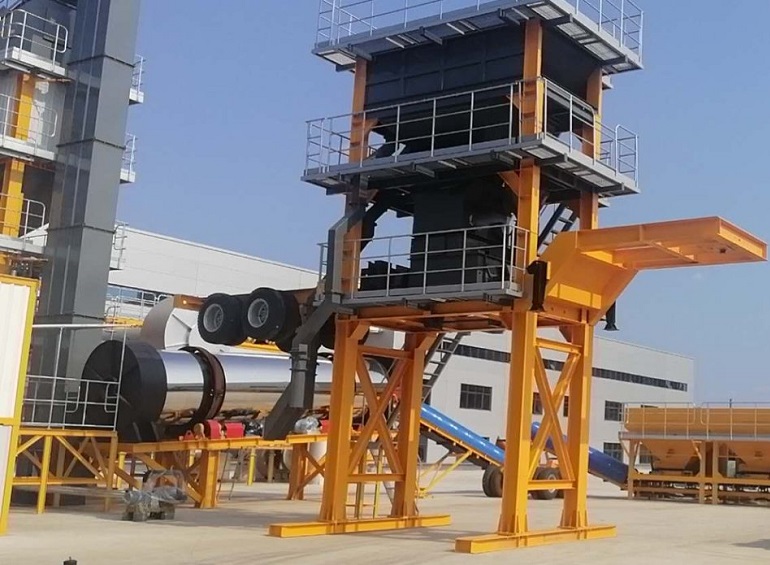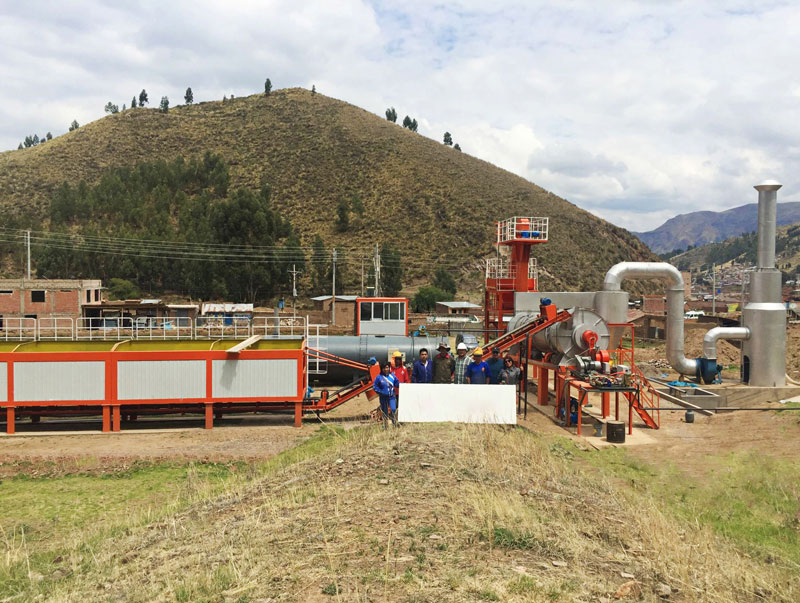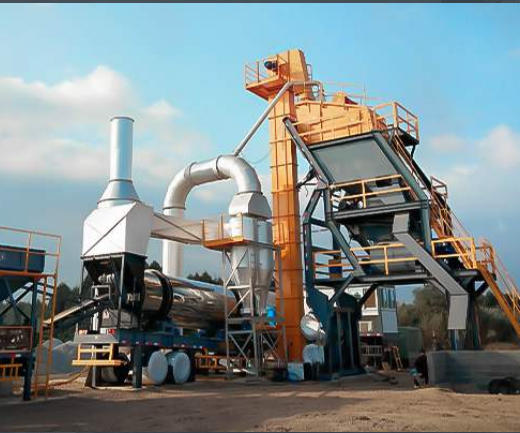Production quality control 7 points of asphalt mixing plant
The quality of production quality of asphalt mixing plant is mainly reflected in its indicators - stability and flow value, which represent the stability and deformation resistance of mixture at high temperature. In fact, they are indicators reflecting the material strength and deformation capacity of asphalt concrete after material formation. Therefore, we should control the quality of mixture from the following main aspects.

Coarse mineral aggregate is crushed stone with particle size of 2.36 ~ 25mm, which needs to provide stability through the interlocking effect of aggregate particles on the concrete surface and resist displacement through friction. This requires that its mechanical properties should meet the technical requirements of asphalt concrete and have a certain shape (shape affects concrete compactness, high temperature stability and pavement structural strength). The coarse aggregate is required to be cube particles with rough surface and edges and corners after crushing. The content of needle and flake is low, and there is high internal friction between aggregates.
2、 Fine aggregate
Fine aggregate refers to the broken rock with particle size of 0.075 ~ 2.36mm. The slag and mineral powder shall be clean, free of clay and other harmful substances, and shall have possible edges and corners, so as to increase the interlocking effect between particles, reduce the pores between aggregates and increase the stability of the mixture.
3、 Asphalt
Before use, check whether all indexes of asphalt meet the technical requirements of traffic petroleum asphalt, including penetration, strength, softening point, flash point, melting degree, wax content and film oven heating test indexes.
The asphalt grade shall be selected according to the local climate. The higher the asphalt grade, the greater the penetration and the lower the consistency. It is suitable for areas with lower temperature. The pavement built in this way has better low-temperature crack resistance, but poor high-temperature stability. Generally, different types of asphalt are selected according to different layers, and thinner asphalt shall be used for the surface layer to improve the crack resistance of the surface layer. Thicker asphalt is used in the middle and lower layers to improve its rutting resistance. The higher the consistency of asphalt, the higher the penetration PI index, the stronger the high-temperature stability and rutting resistance of pavement, but the temperature crack resistance is poor. Therefore, various modifiers can be added to petroleum asphalt in construction to improve the high-temperature stability and low-temperature cracking of asphalt pavement. The wax content shall also be controlled below 3%. If the wax content is too high, it will affect the high-temperature stability and low-temperature crack resistance of the pavement, as well as the adhesion of asphalt.
4、 Control of mix proportionThe design of target mix proportion should be selected from repeated tests. After determining the quantity of each level, Marshall test should be carried out to determine the best asphalt dosage, so as to determine the batching proportion of each specification silo. After the feeding time sequence, the heated new mineral material flows from the inner cylinder to the inner tank of the outer cylinder at the discharge port at one end of the combustion port of the drying cylinder, and is dry stirred with the mixture such as filling materials that arrive at the same time and discharged from the discharge port. The mixture is screened and the mix proportion of silos and filling materials of various specifications is adjusted, Until the error between the passing rate of key sieve holes and the median value of the target grading range is within the specified value.

In the specification, the asphalt heating is controlled at 150 ~ 170 ℃, the mineral aggregate temperature is 10 ~ 20 ℃ higher than the asphalt, and the ex factory temperature of the mixture is 140 ~ 155 ℃. The ex factory temperature of the finished asphalt mixture directly affects the paving quality and rolling quality. When transported to the paver for use, the temperature is controlled at 135 ~ 150 ℃, the initial rolling temperature shall not be lower than 135 ℃, and the final rolling temperature shall not be lower than 110 ℃, The open traffic shall not be higher than 60 ℃, the temperature of finished products shall be detected at any time during the production process, and fed back to the operation room in time to control the temperature.
6、 Oil stone ratio control
Asphalt aggregate ratio is the ratio of asphalt quality to sand and other additives in asphalt concrete. It is the most important index to control asphalt concrete. If the asphalt aggregate ratio is too large, there will be "oil cake" after paving and rolling. If the asphalt aggregate ratio is too small, the concrete material will be divergent and the rolling will not be formed, which are all quality accidents.
7、 Mixing of mixture
All mineral aggregate particles are required to be wrapped in asphalt without uneven wrapping, hoary material, caking or serious segregation. The mixture with scorched, carbonized and bubbling and water content shall be discarded. Generally, the mixing time is 45 ~ 90s. Various technical indexes of the material shall be sampled at any time every day and every week and submitted to the Engineer for approval.



 RU
RU MM
MM AR
AR




